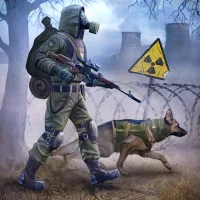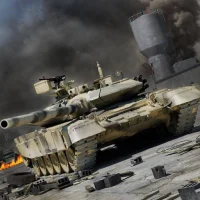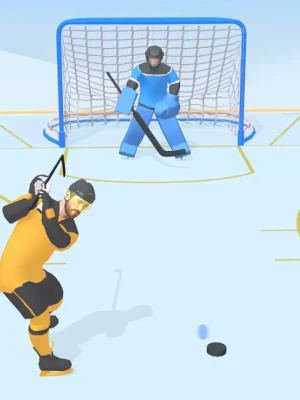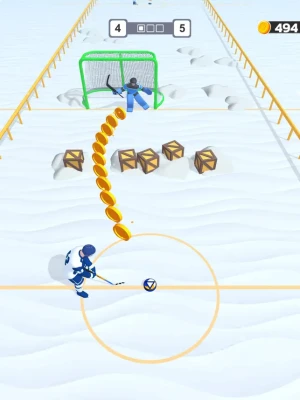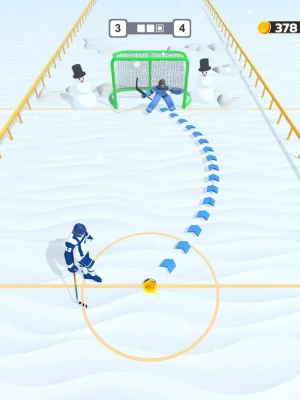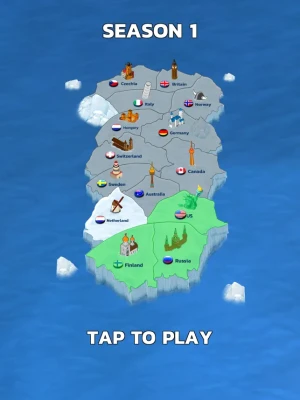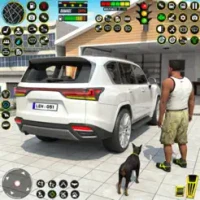
Latest Version
328
April 18, 2025
Shoot Puck To Win Ice Hockey
Games
iOS
241.6 MB
0
Free
Report a Problem
More About All Stars: Ice Hockey Games
Mastering Every Ice Hockey Arena: A Comprehensive Guide
Ice hockey is more than just a game; it’s a thrilling battle of skill, strategy, and teamwork played on a variety of ice rinks around the world. Whether you’re a seasoned player or a passionate fan, understanding the nuances of each arena can enhance your experience and performance. This guide will delve into the essential aspects of conquering every ice hockey map, from the layout of the rink to the strategies that can help you dominate the game.
Understanding the Ice Hockey Rink Layout
The ice hockey rink is a unique battlefield, and knowing its layout is crucial for success. Each rink has specific dimensions and markings that dictate gameplay. Here’s a breakdown of the key areas:
- Center Ice: This is the heart of the rink where face-offs occur. Mastering puck control in this area is vital for gaining possession.
- Defensive Zone: Understanding your defensive zone is essential for preventing goals. Players must communicate effectively to cover opponents and block shots.
- Offensive Zone: This is where the magic happens. Developing strategies to create scoring opportunities in this area can lead to victory.
- Goal Crease: The area directly in front of the goal is critical. Players must learn to navigate this space to score while also defending against opposing players.
Strategies for Success on the Ice
To conquer every ice hockey map, players must employ effective strategies tailored to their strengths and the dynamics of the game. Here are some key strategies to consider:
1. Communication is Key
Effective communication among teammates can make or break a game. Use verbal cues and hand signals to coordinate plays, especially during fast-paced situations. Establishing a common language on the ice fosters teamwork and enhances performance.
2. Mastering Puck Control
Puck control is fundamental in ice hockey. Players should practice stickhandling drills to improve their ability to maneuver the puck under pressure. The better your puck control, the more opportunities you create for yourself and your teammates.
3. Positioning and Spacing
Understanding positioning is crucial for both offensive and defensive plays. Players should maintain proper spacing to avoid crowding and to create passing lanes. This strategic positioning allows for quick transitions and effective counterattacks.
4. Utilizing the Boards
The boards are an often-overlooked asset in ice hockey. Players can use them to their advantage by banking the puck off the boards to evade defenders or to set up plays. Learning how to effectively use the boards can give you a competitive edge.
Adapting to Different Ice Hockey Arenas
Each ice hockey arena has its unique characteristics, from the size of the rink to the quality of the ice. Adapting to these differences is essential for success. Here are some tips for adjusting to various arenas:
1. Ice Quality
The quality of the ice can vary significantly between arenas. Pay attention to the ice conditions during warm-ups and adjust your skating and puck handling accordingly. Slippery ice may require more careful control, while rough ice may slow down the puck.
2. Rink Dimensions
Some rinks are larger or smaller than standard dimensions. Familiarize yourself with the specific measurements of the rink you’re playing on. This knowledge will help you adjust your strategies and positioning during the game.
3. Crowd Dynamics
The atmosphere of an arena can impact player performance. Some players thrive in front of large crowds, while others may feel pressured. Embrace the energy of the crowd and use it to fuel your performance on the ice.
Training and Preparation
To conquer every ice hockey map, consistent training and preparation are essential. Here are some effective training methods:
1. On-Ice Drills
Regular on-ice practice is crucial for honing skills. Focus on drills that enhance skating, shooting, and passing. Incorporate game-like scenarios to simulate real match conditions.
2. Off-Ice Conditioning
Strength and conditioning off the ice play a significant role in performance. Engage in exercises that build endurance, strength, and agility. A well-rounded fitness regimen will improve your overall game.
3. Video Analysis
Reviewing game footage can provide valuable insights into your performance. Analyze your plays, identify areas for improvement, and learn from both successes and mistakes. This reflective practice can lead to significant growth as a player.
Conclusion
Conquering every ice hockey map requires a combination of skill, strategy, and adaptability. By understanding the rink layout, employing effective strategies, and preparing diligently, players can enhance their performance and enjoy the game to its fullest. Embrace the challenges of each arena, and let your passion for ice hockey drive you to success on the ice.
Rate the App
User Reviews
Popular Apps




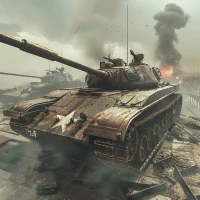





Editor's Choice



